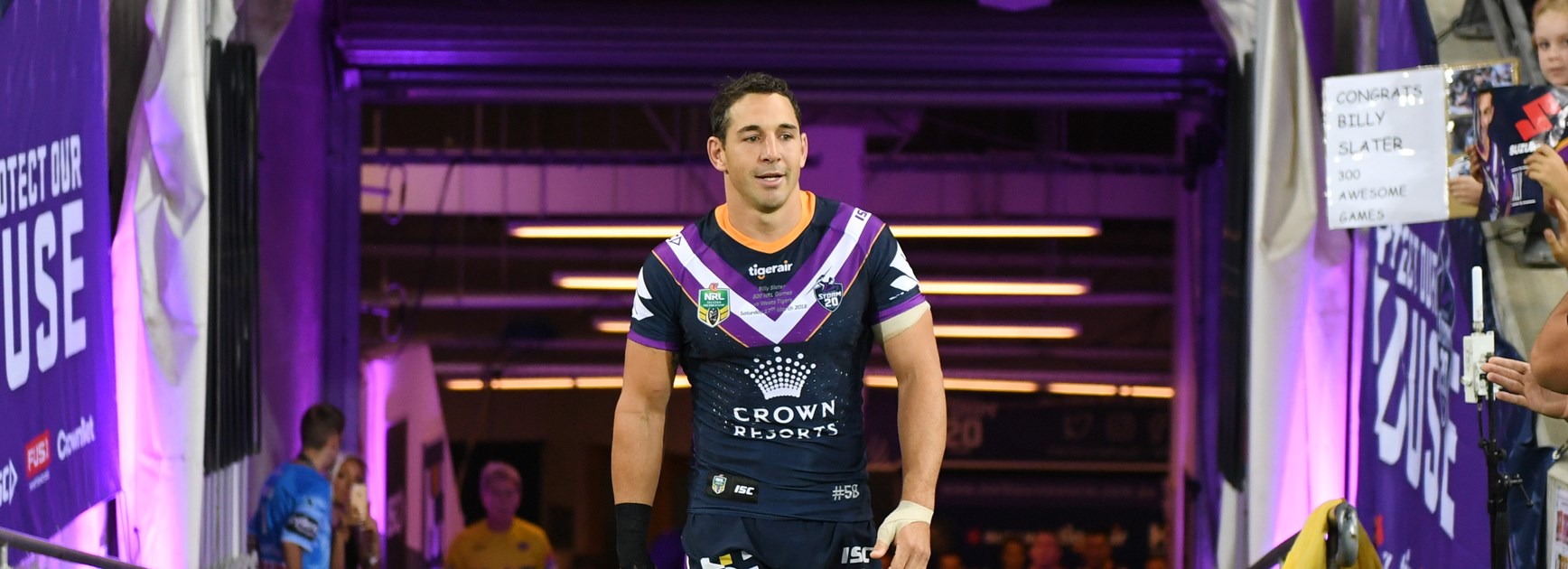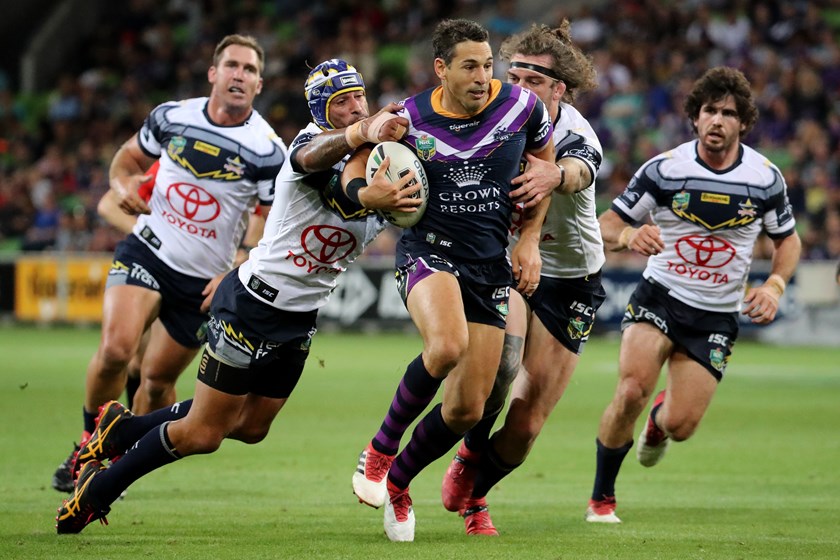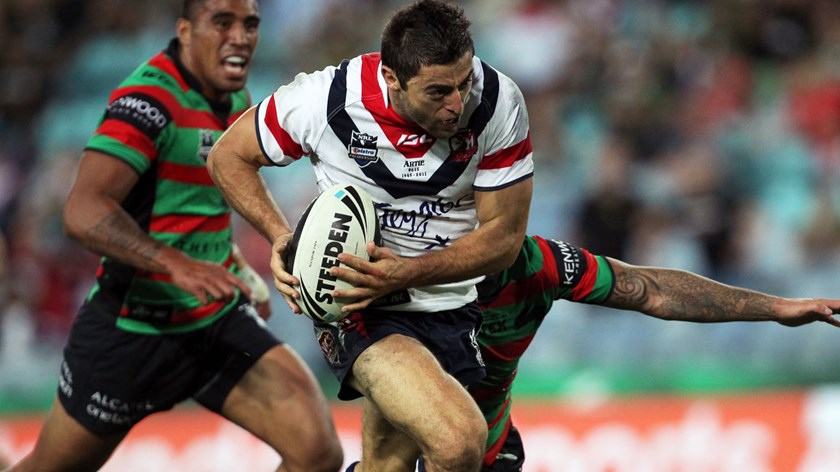
Billy Slater's evolution to become one of rugby league's best fullbacks started during Melbourne Storm's pre-season of 2003.
Craig Bellamy, who had recently joined as head coach, was intent on making his mark on his new club. So was the young Slater, who was fighting for a full-time contract.
"Everyone was trying to make a point," Slater told NRL.com.
"Craig was trying to create a culture at the club that resulted in success. I was just a young kid trying to impress and get an opportunity to stay in Melbourne, and to stay in the full-time squad. At the end of that pre-season, Craig kept myself and Dallas Johnson in the full-time squad, and we both debuted in round one (2003)."
Bellamy was impressed by the 19-year-old's competitiveness and work ethic. When Robbie Ross, the incumbent Storm custodian, was struck down by injury, the coach gave Slater a start at fullback. It was a foreign position for the young Queenslander.
"The first time I'd ever played a game at fullback was my debut in the NRL," Slater said.
"It's quite weird. I never played the position growing up, I always played in the halves. A little bit of hooker.
"I didn't understand all the fundamentals of fullback play when I first started. I just chased the footy. Sometimes I was in the wrong position; sometimes I was in the right position. But I was always in the frame and the picture. In the handful of games I played in the centres and on the wing, I didn't play your traditional winger's role. It's something my centre (partners) got frustrated with - because I just roamed around and wanted to be around the footy."

Ross, a former Australian and New South Wales representative, stepped in to educate Slater on the subtleties of fullback play.
"I was fortunate enough to play a handful of times with him - he came back from injury that year - that's when I shifted to the wing and the centres. But then Robbie unfortunately retired halfway through that year - but the amount of work he did with me off the field, going through video, trying to understand positional play and support play, which he was really good at. That was integral to the development of me in my position."
As the years went on, Slater watched how other fullbacks went about their business. Matt Bowen, Rhys Wesser and Luke Patten were favourites. But one man was raising the bar for fullback play for everyone: Sydney Roosters maestro Anthony Minichiello.
"When I was coming through, he (Minichiello) was really changing the involvement of a fullback," Slater said.
"He would have 20-25 carries a game. I was not even at half of that. Craig Bellamy challenged me to get my numbers not up to his level, because I was a different player to him, but challenged me to try and increase my numbers to get closer to his."

Slater probably didn't know at the time but Minichiello watched his progress with a healthy degree of mutual respect.
Because of the whole NSW versus Queensland rivalry, they didn't much time comparing notes. But the Roosters fullback admired Slater's ability.
"You could tell he was very skilful, very fast, and his footwork was unbelievable," Minichiello said.
"He wasn't a big guy, so he had to work on a lot of things. Taking the ball back into a 12-13 person line can be tough at times, but he worked out a way with his smarts to put people off-balance, and use his speed and agility to create power."
Slater on the evolution of the fullback
Slater also looked up to Darren Lockyer. He enjoyed the Queensland and Australian captain's ability to mix play-making ability with an elusive running game.
"He was the ideal fullback," Slater said.
"He had that grace when he ran the football, but also his ability to pass and set his outside men up. He was a guy who showed everyone how to do it. It's not easy watching guys like that and going, "I'm going to do that now", but then you've got to train that on the paddock and try and evolve it into your game and hopefully become a more rounded player."
Communication is another crucial part of today's NRL fullback play. Slater has a naturally chirpy personality, but still had to work on his organisational skills and defence. The young fullbacks coming through aren't as talkative.
"That's one trait a lot of the guys seem to have: the shyness," he said.
"It's an intimidating environment coming into an NRL club and being the young guy. But when you're a fullback, you've got to be vocal and directive with your talk. That's what the team requires, and naturally shy people have to learn that and develop that."


